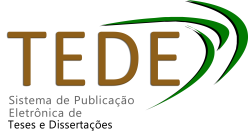| Share record |


|
Please use this identifier to cite or link to this item:
https://tede2.pucrs.br/tede2/handle/tede/11661| Document type: | Dissertação |
| Title: | Modelos de aprendizado de máquina para predição de óbito de pacientes em hemodiálise |
| Other Titles: | Machine learning models for death prediction of patients under hemodialysis |
| Author: | Souza, Diego Candido de  |
| Advisor: | Musse, Soraia Raupp |
| Abstract (native): | No Brasil, 133.464 pessoas com Doença Renal Crônica (DRC) estão em hemodiálise, com mortalidade. Os biomarcadores obrigatórios para o acompanhamento desses pacientes são determinados pela Diretriz Clínica do Ministério da Saúde de 2014. Mais de trinta biomarcadores são avaliados anualmente. Nenhuma avaliação crítica sobre o valor preditivo desses biomarcadores foi realizada no país, utilizando Aprendizado de Máquina (AM). Assim, o presente projeto tem o objetivo de desenvolver modelos de AM que permitam predizer o desfecho de óbito em pacientes em hemodiálise com base nos biomarcadores de rotina. Pretende-se, com isso, gerar instrumentos de monitoramento que possibilitem avaliar a efetividade preditiva dos exames clínicos, a fim de melhorar a qualidade de vida dos pacientes e contribuir na gestão de custos do Sistema Único de Saúde (SUS). Neste trabalho, são utilizados dados de pacientes incidentes em hemodiálise de um estudo de coorte retrospectivo realizado de 2012 a 2019 em 23 unidades de diálise de cinco estados brasileiros. As features utilizadas no desenvolvimento dos modelos são os biomarcadores, variáveis de perfil dos pacientes e desfechos clínicos. Serão testadas diferentes abordagens e algoritmos de AM usando os modelos de Decision Tree, Random Forest, Logistic Regression e XGBoost ML no intuito de identificar o melhor modelo preditivo. |
| Abstract (english): | In Brazil, 133,464 people with Chronic Kidney Disease (CKD) are on hemodialysis with mortality of 19.5% per year. The mandatory biomarkers for monitoring these patients are determined by the 2014 Ministry of Health Clinical Guideline. More than thirty biomarkers are evaluated annually, with a third being assessed monthly. No critical assessment of the predictive use value of these biomarkers has been carried out in the country using Machine Learning (ML). Therefore, the present project aims to develop AM models that allow predicting the outcome of death in hemodialysis patients based on routine biomarkers. The aim is to generate monitoring instruments that make it possible to evaluate the predictive effectiveness of clinical examinations in order to improve patients’ quality of life and contribute to the cost management of the Unified Health System (SUS). In this work, data from incident hemodialysis patients from a retrospective cohort study carried out from 2012 to 2019 in 23 dialysis units in five Brazilian states are used. The features used in the development of the models are biomarkers, patient profile variables and clinical outcomes. Different ML approaches and algorithms will be tested using the Decision Tree, Random Forest, Logistic Regression and XGBoost ML models in order to identify the best predictive model. |
| Keywords: | Machine Learning Biomarcadores Inteligência Artificial Diretriz Clínica Diálise Biomarkers Artificial Intelligence Clinical Guideline Hemodialysis |
| CNPQ Knowledge Areas: | CIENCIA DA COMPUTACAO::TEORIA DA COMPUTACAO |
| Language: | por |
| Country: | Brasil |
| Publisher: | Pontifícia Universidade Católica do Rio Grande do Sul |
| Institution Acronym: | PUCRS |
| Department: | Escola Politécnica |
| Program: | Programa de Pós-Graduação em Ciência da Computação |
| Access type: | Acesso Aberto |
| Fulltext access restriction: | Trabalho não apresenta restrição para publicação |
| URI: | https://tede2.pucrs.br/tede2/handle/tede/11661 |
| Issue Date: | 18-Sep-2024 |
| Appears in Collections: | Programa de Pós-Graduação em Ciência da Computação |
Files in This Item:
| File | Description | Size | Format | |
|---|---|---|---|---|
| DIEGO_CANDIDO_DE_SOUZA_DIS.pdf | DIEGO_CANDIDO_DE_SOUZA_DIS | 1.05 MB | Adobe PDF |  Download/Open Preview |
Items in DSpace are protected by copyright, with all rights reserved, unless otherwise indicated.




